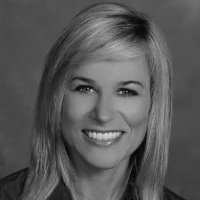As we continue to celebrate our 100th anniversary, we went to our consulting practice leaders and asked them three questions:
- How have things changed in their fields in the past 100 years?
- What are the biggest challenges they – and their clients – are about to face?
- What’s the most exciting thing they speculate is coming along?
This post looks at those questions through the eyes of Jill Spielberger, our Engagement consulting practice leader in the U.S.
Pulling the focus back to the person
Over 100 years, we’ve seen movement to an increasingly personal employee engagement experience. For the better part of the past century, the story had to be as general as possible to reach and inspire as many as possible. Organizations had to sell their value proposition broadly, highlighting differentiators that would appeal in general to their target audience (employees, candidates, retirees, etc.).

“To deliver from the user’s perspective, employers will need to find a way for their benefits, wellness, compensation, equity, retirement, performance management, learning management, etc. systems to seamlessly work together.”
Jill Spielberger, Global Engagement Practice Leader, Atlanta
With the advent of personalized communication approximately forty years ago with impact printing, messaging became more targeted. The value proposition could inspire more individually. Personalized benefits statements of the 70s changed the conversation to be one-to-one. Enrollment elections could be summarized. Pension benefits could be presented individually.
Those benefits statements gave way to total compensation statements in the 80s and 90s that started to show the full picture of program value to the individual. Online total rewards systems took over in the 2000s with anywhere, anytime access to data.
Now we’re seeing the advent of total wellbeing portals that capture every aspect of the employer’s relationship with the employee – including tools and information to help coach an individual through their health, wealth and career goals.
Even the perspective of the story has changed. The organization used to take center stage. For years, it’s been a story of what the organization offers to the employee and how employees are rewarded for their efforts. Now, the individual is the focus. Messages are contextualized to be relevant based on what’s going on in their life. Users choose their preferred channel for interaction – from web, to call center, to chat, to e-mail, to print, to in-person. They even get messaging when and where they want it, from reminders of upcoming events they’ve scheduled to targeted action items that guide them through a process.
All of this, of course, can and should be measured to assure every interaction with these HR consumers generates the outcomes the organization wants. Messages, media and timing can be tweaked to assure individuals are making the most of the HR programs available.
Along these lines of an employee-centric experience, the lines of communication have also changed. The top down method has been enhanced with a user-generated content model. Knowledge sharing across the organization – when harnessed effectively – can assure great ideas or learnings are not trapped. Collaboration across geographies, generations and skillsets ensure diversity of thought and experience. Communities emerge around common challenges and opportunities. Social interaction expands beyond the immediate workplace. Employees become increasingly engaged with the organization, even when employees themselves are the ones creating that encompassing environment.
Open dialog
With an increasingly mobile workforce, both in the channels they expect to interact and in their lack of loyalty to a single employers, engagement will need to evolve. Certainly, information and transactions will need to be readily available on any device – especially handheld. That also means that silos will need to be broken. To deliver from the user’s perspective, employers will need to find a way for their benefits, wellness, compensation, equity, retirement, performance management, learning management, etc. systems to seamlessly work together. Best of breeds will always emerge, so creating one unifying experience will be essential for minimizing user frustration.
The rise of the contingent workforce will require a dialog with workers that starts well before they contribute, continues during their work effort and remains in place once they leave. Key talent will need to be drawn back to the organization, perhaps even frequently, so engagement won’t solely be a “while employed” experience.
i-Engagement

“We’re on the verge of creating a Siri, Sync or Alexa-type experience for HR. ” Scot Marcotte, Managing Director, Client Technology
We’re on the verge of creating a Siri, Sync or Alexa-type experience for HR. The more information we know about an individual and the more we can marry that data with the programs an organization offers, the more real a fully interactive, eligibility-driven question-and-answer experience can be. In the kitchen, an individual could call up recipes that align with their medical condition, through their Sync system in the car they check the balance in their HSA as they head out to the doctor and ask their iPhone how much PTO they have left as they plan a vacation while in the doctor’s waiting room.
Employers have access to the programs, data and information to help employees improve their own health, wealth and career. With emerging interactive technologies such as these, we can make sure individuals access and get the right life coaching at the right time to truly make a difference in their lives.